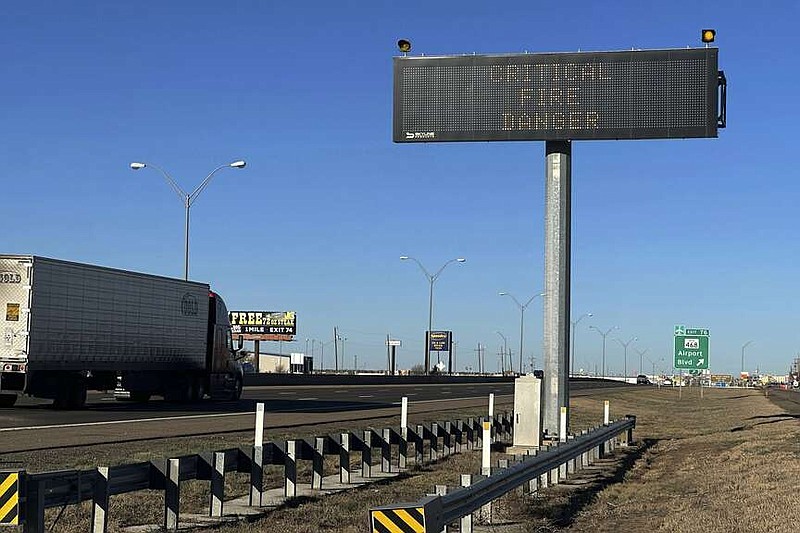STINNETT, Texas -- Firefighters in Texas faced rising temperatures, whipped-up winds and dry air Saturday in their battle to keep the largest wildfire in state history from turning more of the panhandle into a parched wasteland.
Firefighters were focused on containing the fire along its northern and eastern perimeter, where aggressive gusts from the southwest threatened to spread the flames and consume more acreage, according to Jason Nedlo, a spokesperson with the team of firefighters battling the Smokehouse Creek Fire that began Monday and has claimed at least two lives.
"The main goal is to continue using dozers and fire engines to contain and patrol the fire," Nedlo said. "We're also focused on not losing any more structures, no more loss of life."
The sprawling fire has left a charred landscape of scorched prairie and dead cattle and destroyed as many as 500 structures, including burned-out homes, in the Texas panhandle. It has merged with another fire and crossed the state line into Oklahoma, burning more than 1,700 square miles and was 15% contained as of Saturday, the Texas A&M Forest Service said.
The National Weather Service issued a red flag warning for the entire panhandle through midnight today after rain and snow on Thursday allowed firefighters to contain a portion of the fire.
Signs warning travelers of the critical fire danger are in place along Interstate 40 leading into Amarillo.
Winds gusts of up to 45 miles per hour were expected Saturday, with humidity below 10% and a high temperature of 75 degrees.
"New fires could also potentially start ... the relative humidities are very low, the wind gusts are high and so it doesn't take much, all there needs to be is a spark" to ignite another fire, said meteorologist William Churchill with the National Weather Prediction Center.
Nedlo said because of the ongoing weather conditions, it is not possible yet to predict when the flames will be fully contained and brought under control.
"We'll know more after the weekend ... we're just not willing to speculate," Nedlo said.
The cause of the fire remains under investigation, although strong winds, dry grass and unseasonably warm weather fed the flames.
"Everybody needs to understand that we face enormous potential fire dangers as we head into this weekend," Republican Gov. Greg Abbott said Friday after touring the area. "No one can let down their guard. Everyone must remain very vigilant."
Two women were confirmed killed by the fires last week. But with flames still menacing a wide area, authorities haven't yet thoroughly searched for victims or tallied homes and other structures damaged or destroyed.
Two firefighters were injured battling the flames in Oklahoma. One suffered a heat-related injury and the other was injured when the brush pumper in which he was riding struck a tanker truck as the two were heading to fight the fire near Gage. Both firefighters are expected to recover.
Texas Agriculture Commissioner Sid Miller said individual ranchers could suffer devastating losses from the fires, but predicted the overall impact on the Texas cattle industry and consumer beef prices would be minimal.
The number of dead cattle was not known, but Miller and local ranchers estimate the total will be in the thousands.
Information for this article was contributed by Ty O'Neil and Jamie Stengle of The Associated Press.
